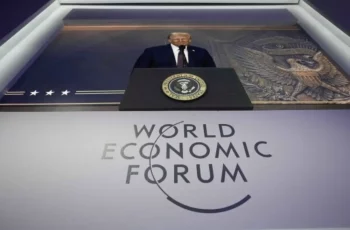
Los Angeles is one of the most diverse cities in the U.S. and it has again become the epicenter of a fierce societal conflict. Massive immigration raids, military patrols on city streets, and widespread protests have turned the city into a battleground between two ideologies: those calling for strict border enforcement and those defending migrants’ rights. A city home to nearly one million undocumented residents has become a vivid mirror of America’s division.
Control over illegal immigration or witch hunt?
The large-scale raids conducted in June 2025 across downtown Los Angeles and the Fashion District became some of the most controversial in recent years. ICE and HSI agents acted in tight coordination: cordoning off streets, blocking stores, stopping pedestrians, and checking documents. Official figures report over a hundred detentions; unofficial estimates suggest many more.
The case of Andrea Velez—an American citizen of Latin American descent mistakenly detained—fueled public outrage. Her family decried it as truthfully a kidnapping, and attorneys called it a flagrant violation of constitutional rights. For many, this became symbolic: immigration enforcement had crossed a line and turned into unchecked persecution.
Local media reported that not only undocumented individuals were detained, but also U.S. citizens who simply couldn’t present ID on the spot. In some incidents, ICE agents did not identify themselves, failed to explain the cause of arrest, and refused to let detainees speak with lawyers. This triggered a wave of protests in Los Angeles and across California.
Civic organizations, rights groups, and religious communities accused authorities of ethnic profiling and violating fundamental principles of the rule of law. “Today, if you don’t have a passport, they take you. Tomorrow, speaking with an accent or having a different skin color might be enough,” one activist said at a rally outside city hall.
Supporters of the raids countered that ICE was simply enforcing existing laws. Critics, however, argued that the methods increasingly resembled a manhunt rather than legal enforcement. The most troubling aspect is that citizens, too—especially those who don’t match the image of a “typical American”—can find themselves at risk.
What began as a show of strength soon had the opposite effect, generating fear, distrust, and isolation. The result: a stronger division rather than greater control.
Military on the streets
The deployment of National Guard troops and Marines in Los Angeles was truly historic—the first time armed forces patrolled the city since the 1992 riots following the Rodney King verdict. The mission may have been framed as immigration support, but its impact was eerily similar: fear, tension, and a widening gap between government and citizens.
The Trump administration defended the move as necessary for public safety and to aid federal immigration efforts. But for many locals, seeing military vehicles and uniformed personnel in everyday neighborhoods—especially those with high migrant populations—felt more like an occupation than protection.
Critics argued that militarizing civilian areas undermines democratic norms. In a nation where the military is traditionally separated from domestic policy, such actions raise alarm. It sends a message not only to migrants but also to dissenters—that any resistance may be met with force.
California Governor Gavin Newsom refused to support the deployment, calling it a violation of state rights. Mayor Karen Bass asserted the city “does not need an occupation” and stressed that residents are not enemies of the state. Despite this, the White House maintains the stance that such measures are justified by the “unique situation.”
Economic shockwaves
Migration and federal actions have already dealt a serious blow to Los Angeles’s economy. Many industries rely heavily on migrant labor, and within days they faced disrupted supply chains, falling demand, and rising service costs.
The construction sector was hit first—small subcontracting and repair teams, many staffed by undocumented workers, froze operations. Workers stayed home out of fear, and projects stalled. Logistics and warehousing also took a hit: shipments delayed, drivers quitting, and supply chains faltering.
Service industries—restaurants, laundries, car washes, cleaning services—also suffered. Businesses reported sharp drops in revenue and cited labor shortages as the main challenge.
Analysts from UCLA estimate that if this situation continues, the city could lose as much as 2–3% of GDP within a quarter. The sectors affected traditionally remain stable during downturns, such as personal services and retail, making the impact all the more concerning.
Everyday impacts—longer pharmacy lines, empty supermarket shelves, delayed deliveries—became visible. Undocumented migrants, while not citizens, form an essential part of the economic fabric. Their sudden disappearance doesn’t signify political victory—it marks an economic crisis.
The city has also been forced to reallocate funds for humanitarian aid, temporary shelter, and legal support—cuts affecting schools, healthcare, and other public services.
America in a microcosm
Los Angeles is not just a local hotspot; it’s a snapshot of the nation. The city starkly displays America’s deep rift over immigration policy.
In Texas, Governor Greg Abbott launched “Operation Lone Star,” deploying thousands of National Guard troops and constructing makeshift fences. Texas also began detaining migrants independently for minor infractions, sparking legal battles with the federal government.
Meanwhile, Florida Governor Ron DeSantis passed one of the country’s strictest anti-immigration laws, outlawing employment of undocumented workers, requiring immigration checks for employers, and allowing arrests at doctor’s offices. The law triggered widespread protests, labor shortages, and criticism from businesses.
New York City, by contrast, expanded its sanctuary city policies—offering undocumented migrants access to schools, medical care, and temporary housing. However, overwhelmed services and lack of federal funding have stretched the system thin, causing strain among local residents who argue that resources are being diverted away from them.
Similar tensions have appeared in Chicago and Boston, as city officials grapple with immigration support policies amid budget limits and rising arrival numbers.
At the federal level, states are increasingly at odds: some filing lawsuits against ICE, others refusing to comply with its orders, and still others pushing their own legislative agendas on immigration.
Los Angeles, therefore, isn’t an outlier—it’s a vivid reflection of trends playing out in Austin, Miami, El Paso, Chicago, New York, and beyond. Across the U.S., local governance is increasingly split between militarized border policies and humanitarian support. Until a national consensus is reached on modern immigration, hotspot cities like L.A. will remain at the frontline of cultural and political contention.










Comments